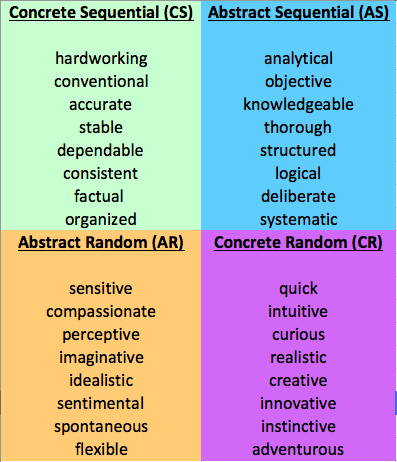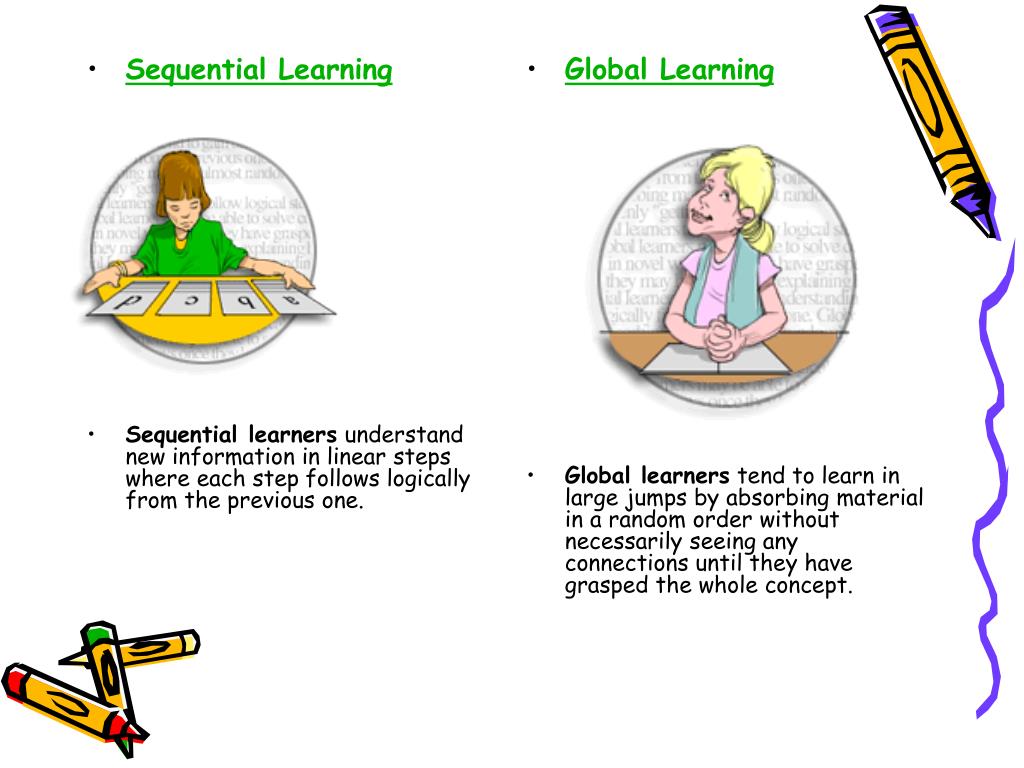

Remember that these categories are not a way to measure a child's intelligence, nor is any one way of learning superior to any other. You could also help him make up a poem or song about his story. You might have him draw a storyboard and tell you the story so you can write it out. Help your 3-D thinker work on writing and drawing skills. She might also make a diorama for her tale out of clay or pipe-cleaner people. Suggest that she pantomime, dance a story, or tell a story with puppets. Here's what you can do: Encourage your 2-D learner to expand on her drawing or writing. A three-dimensional thinker, on the other hand, feels more comfortable working and playing with concrete things. The typical two-dimensional learner gravitates toward words and other symbols. Rather than asking, "What are the colors in the rainbow?" you might say, "Where do you think the first rainbow might have come from?" Let her imagination soar! For your just-the-facts child, offer open-ended questions and opportunities. You can have him help you put away laundry if he absorbs information (socks go on your feet, two socks of the same color go together, and so on), he's learning to sort, an important pre-math skill. Suggest that he make collections of leaves, soup-can labels, pictures from magazines or original drawings of things that are hot, cold, slimy, or scratchy. Here's what you can do: Help your inventor learn to categorize. She gets less pleasure from making things up in her head. His classmate, the child who learns by accruing facts, enjoys reproducing what she hears or copying something she sees. The inventor enjoys using his imagination. Inventing/reproducing: making things up or using what's there.Open-ended questions using the words how and why, rather than what and when, will help. Entice your compartmentalizer to notice all the fascinating patterns and links in his environment. Take her into the kitchen and encourage her to identify things that cut, things that clean, and things that cook or cool. Having that ability will enable your child to gain control of her wide-ranging thought processes.

Here's what you can do: Help your connector refine her focus. For example, if he's painting, he'll copy a pattern that he sees (red circle, blue splash, green lines) but probably won't connect this pattern to another similar one in his environment. By contrast, a child who compartmentalizes tends to separate patterns. If one day he sees, say, two red blocks and one blue block in his preschool classroom and the next day a similarly colored pattern on a peanut butter label, he'll link the two in his mind. The child who learns by making connections gazes alertly at the world and sees patterns everywhere. Connecting/compartmentalizing: relating or separating.Pose questions to bring out his creativity: "What are four different things we could make from these materials?" or "Let's invent three different endings for the story we just read." For example, when he is about to embark on a project, help him use terms such as first, then, next, and lastor finally. Here's what you can do: Encourage a simultaneous learner to express his actions in language. A sequential learner, by contrast, likes to sort materials and methodically think through what he wants to accomplish before getting started. Her basic attitude is: Let's see what happens if I do this! Or if I do that! This kind of learner may be more inclined to take risks than a sequential learner. Simultaneous/sequential: diving in or thinking things throughĪ simultaneous learner likes to plunge right into a project.Here are various learning styles that you may have noticed in your child, your child's playmates. The term learning style refers to how children - and adults - investigate the world, learn concepts, incorporate what they learn, and, finally, use what they've figured out.


 0 kommentar(er)
0 kommentar(er)
